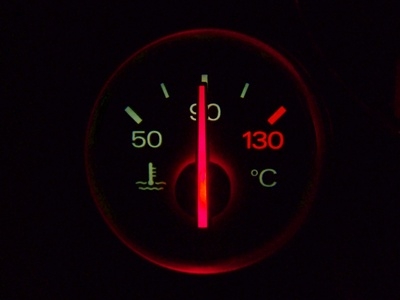
Car engines run remarkably well using combustion fuels and oil for part lubrication. But friction still occurs between the moving parts, leading to heat buildups. If the climbing temperature is not dampened or dissipated, the engine will overheat and stop working. As a result, engine coolant needs to flow sufficiently to keep an engine cool.
Engine coolant has to remain warm enough to stay fluid so it can be pumped through an engine. Water alone won't work; it will freeze too quickly. Coolant with a 50/50 mix of water and ethylene alcohol (anti-freeze) can function at temperatuares as cold as negative 36 degrees Fahrenheit.
The acceptable range for an engine to run at sits between 195 degrees and 220 degrees Fahrenheit. This assumes a person is running a 50/50 mix of antifreeze and water. At 225 degrees, the mixture will boil but still function up to 265 degrees Fahrenheit if the system is kept closed (that is, you don't remove the radiator cap).
When the car engine gets too hot, the gasoline flowing inside will start to detonate prematurely. This can cause pinging and disturbances in the engine combustion cycle. It can also cause damage to the engine pistons by excessive heat. And it can result in a blown engine head gasket. If temperatures are too cold, the car won't start.